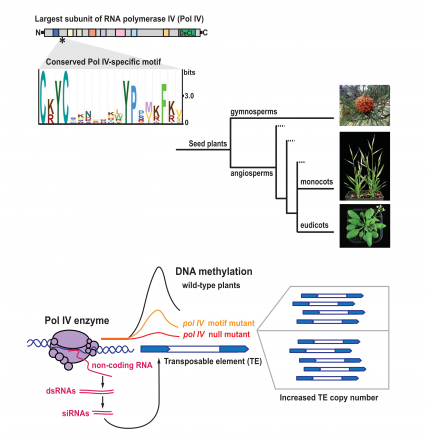In addition to the three RNA polymerases conserved in all eukaryotes, terrestrial plants express subunits for a fourth polymerase (Pol IV) that mediates genome surveillance. Pol IV protects the genome by limiting deleterious mutations caused by transposable elements, but it can also control plant-pathogen interactions or flowering time and seed development. Genetic, molecular and epigenomic data allowed the group of Todd Blevins and their international collaborators to discover a Pol IV-specific protein motif that is required for this genome surveillance.
This work was published in the journal Nucleic Acids Research in August 2019.
Figure: The signature Pol IV motif and its role in genome surveillance.
Top: An N-terminal motif specific to the largest subunit of RNA polymerase IV (Pol IV) is universally conserved in seed plants (e.g., Pinus canariensis, Brachypodium distachyon, Arabidopsis thaliana).
Bottom: Pol IV silences transposable elements via RNA-directed DNA methylation. Mutating the Pol IV-specific motif decreases DNA methylation, leading to the proliferation of transposable elements.
















